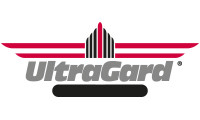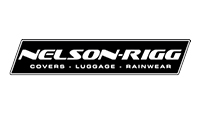Your motorcycle is more than just a machine; it's an investment, a passion, and a partner on the road.
Choosing the right cover is key to preserving your bike's finish, preventing rust, and maintaining its value. Forget the cheap, flapping tarps—modern motorcycle covers are engineered pieces of protection.
1. Indoor vs. Outdoor: The Crucial Difference
Motorcycle covers are generally categorized based on where the bike is stored. Using the wrong type can actually harm your bike, so choose wisely:
Indoor Covers
• Purpose: Primarily protects against dust, dirt, and accidental scratches.
• Material: Often lightweight, stretch-fit (like Oxford Protex), and highly breathable fabric (polyester/microfiber).
• Key Feature: They allow moisture to evaporate easily, which is crucial for preventing mold and rust in enclosed spaces.
Outdoor Covers
• Purpose: Provides all-weather protection from rain, UV rays, wind, and debris.
• Material: Heavy-duty, durable fabrics like polyester (300D denier) or nylon, often treated with polyurethane (PU) or PVC coatings for waterproofing.
• Key Feature: Must be completely waterproof with electronically taped or sealed seams to prevent leaks. Brands like Oxford (Aquatex, Stormex, Rainex) specialize in these.
2. Essential Features of a Premium Motorbike Cover
A great cover does more than just shield from rain. Look for these critical features to ensure maximum protection:
• Weather & Environment Protection
100% Waterproofing: Essential for outdoor use. Check for guaranteed waterproofing and sealed seams.
• UV Resistance: Protects your paint, seat, and plastic components from fading, cracking, and degradation caused by the sun's harsh rays.
• Anti-Corrosion/Rust Inhibition: Some advanced covers (like those using Zerust technology) feature VCI (Vapor Corrosion Inhibitor) chemicals built into the liner, which actively prevent rust on exposed metal parts during long-term storage.
Airflow and Interior Health
• Breathability & Vents: Waterproof covers need a way for trapped moisture (condensation) to escape. Look for Perma-Venting or multiple air vents, typically positioned near the handlebars or mirrors, to ensure healthy air circulation and prevent a damp, corrosive environment inside the cover.
• Heat Resistance: The exhaust pipe stays hot long after the engine is off. A good cover must have integrated heat-resistant panels (often made of a high-temperature material) in the lower section to prevent the cover from melting onto your exhaust.
Security and Fitment
• Soft Inner Liner: A non-abrasive interior, often a soft fleece or cotton blend, is essential to prevent the cover material from scratching the paintwork or windscreen.
• Security Grommets/Openings: Reinforced metal or plastic holes near the front wheel allow you to pass a heavy-duty chain or cable lock through, securing both the bike and the cover itself, acting as a crucial anti-theft deterrent.
• Tie-Down Straps & Elastic: An elasticated hem for a snug fit, combined with adjustable safety straps (often a "belly strap" that runs under the bike) prevents the cover from flapping or blowing off in high winds.
Pro Tip: If your bike is between sizes, select the next size up. It is better to have a slightly larger cover than one that exposes part of your machine.
Consider Your Setup
If you have accessories, you need a cover tailored to that shape:
• Sport Bike Fit: Tends to be shorter and lower.
• aAdventure/Touring Fit: Accommodates tall screens, wide handlebars, and often requires extra room for side cases (saddlebags) and a top box. Look for covers specifically marked "Topcase-Fit" or "Full Dress Tourer."
Investing in a quality motorcycle cover is one of the easiest ways to keep your ride pristine, minimize cleaning time, and maximize riding enjoyment when the weather is clear.

 Vehicle Search
Vehicle Search

 German
German French
French Spanish
Spanish Italian
Italian































